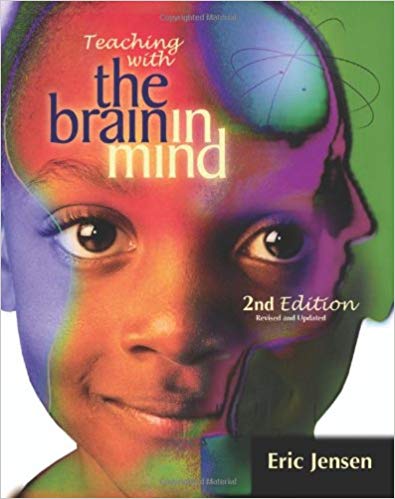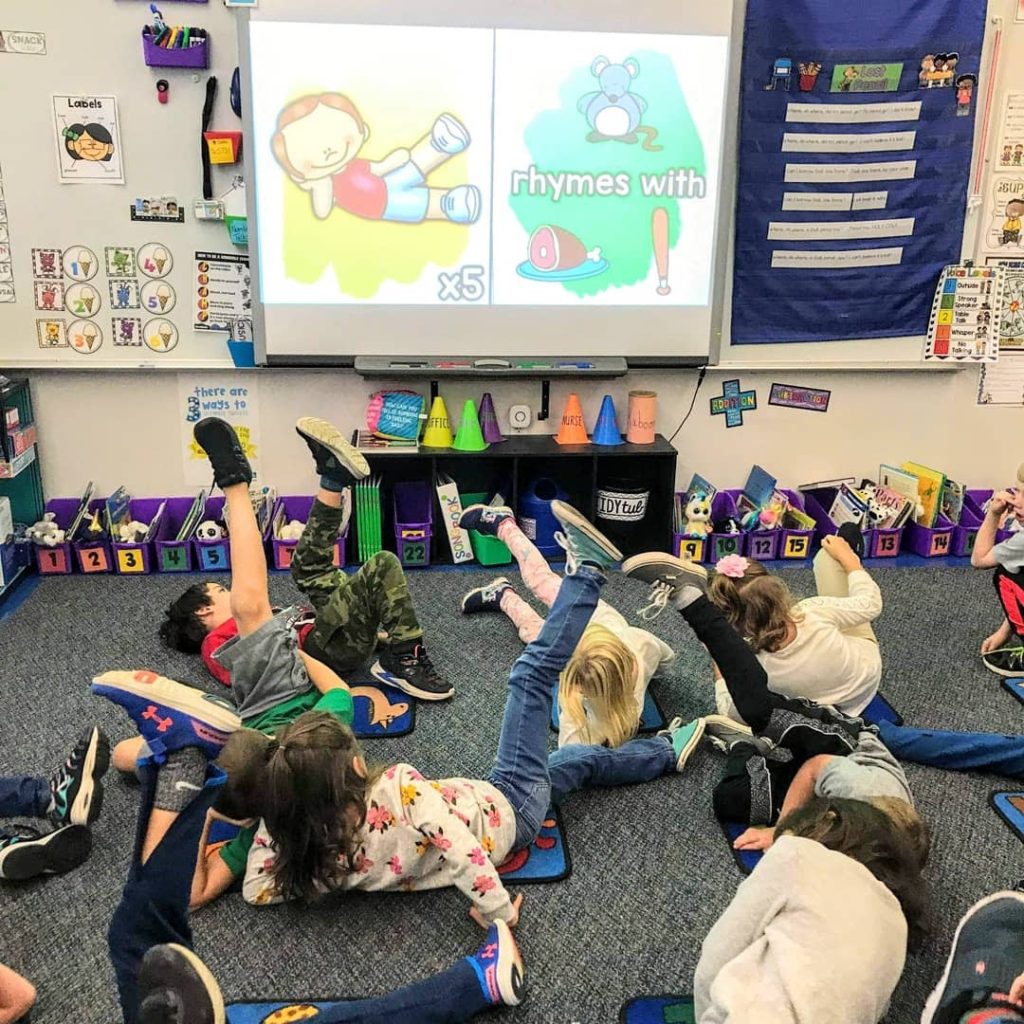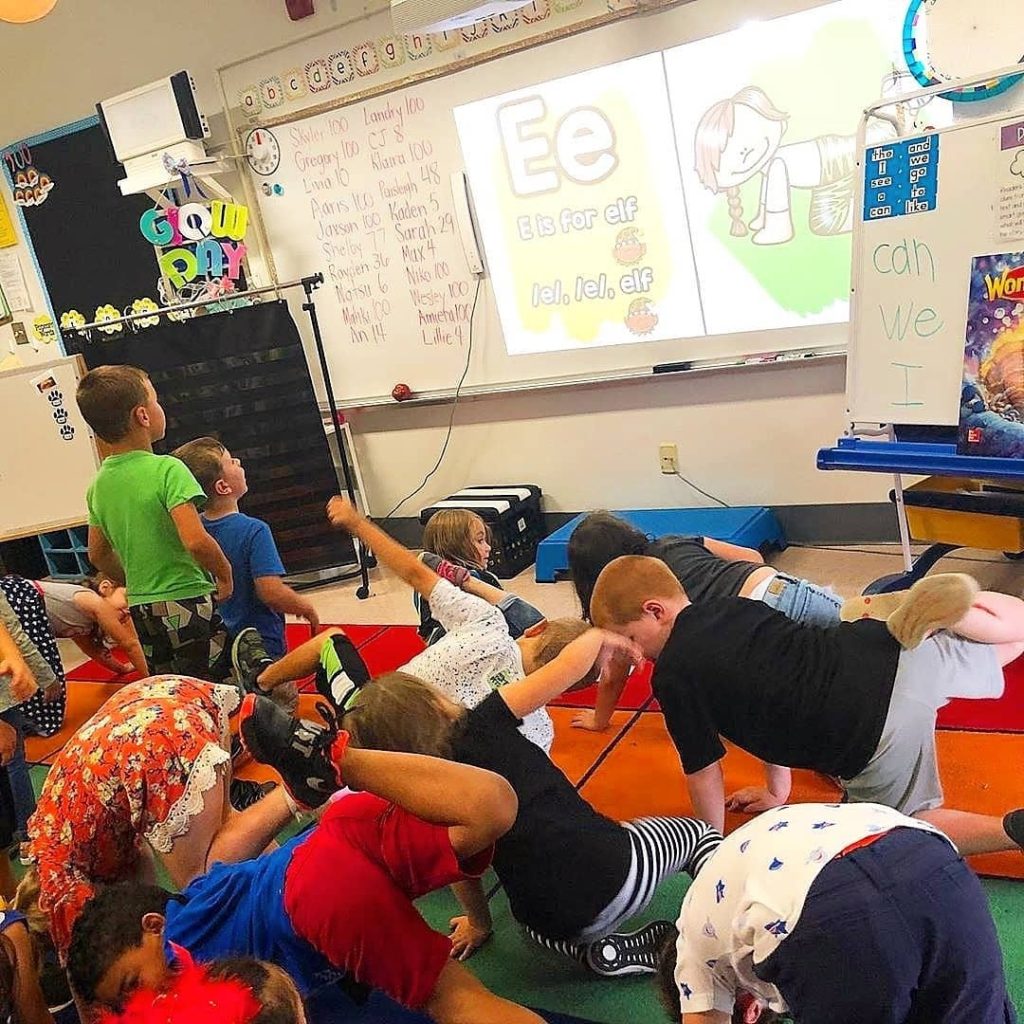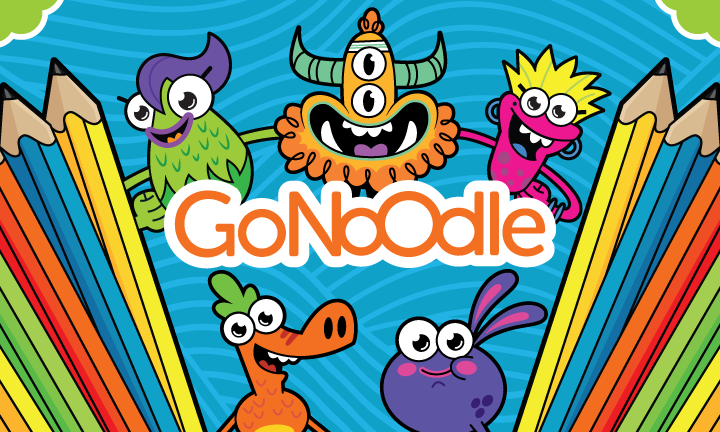We love sharing our favorite resources, books, classroom supplies and teacher stuff with you. When we do, we may earn money or products from the companies mentioned in this post. This does not affect our choices in what to recommend. Rest assured, we only recommend our favorite products to you! You can find our full advertising policy on the Partner With Elizabeth page.
It doesn’t take a rocket scientist to know that kids love to move and that moving is a vital part of the learning process. But how to implement that movement in the classroom can be more difficult.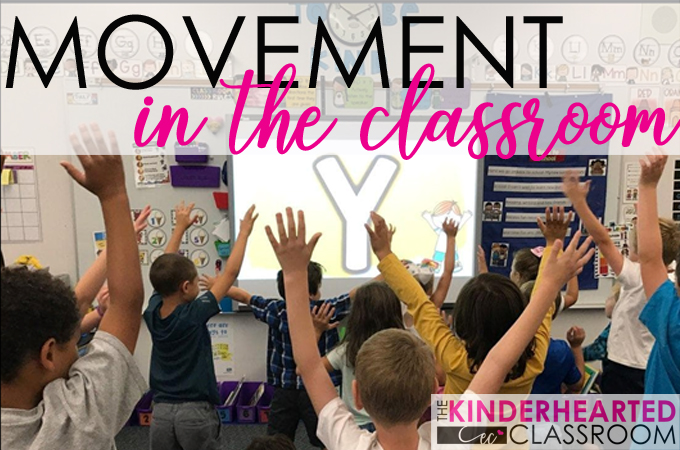
Why is Movement Important?
The brain is an amazing thing. In fact, the entire human body is down right fascinating. In recent years, scientists have been learning more and more about the brain and learning. As we learn more about the brain, we learn more and new ways to help our students learn. In this amazing book, Teaching with the Brain in Mind, by Erin Jensen, Jensen states that research shows that “movement can be an effective cognitive strategy to (1) strengthen learning, (2) improve memory and retrieval, and (3) enhance learner motivation and morale.” Wow! All amazing things that we as teachers want to see in our classroom.
Unfortunately, many of the resources that used to be an automatic part of a student’s day in school have been cut due lack of school funding. That leaves is up to us, the teacher, to come up with creative ways to add movement to the classroom. Today, I want to share 5 fun and engaging ways you can add movement to the classroom to help maximize the learning.
1. Recess
Kids learn so much through play. It is a stress free time to move, experiment with movement and have fun. So much learning happens at recess. For example, students learn about social relationships, the laws of physics and even break through self imposed boundaries. Have you ever seen the pride that comes from scaling the monkey bars for the first time? However, recess is also a great break for the brain from the rigor of academics. So while our students are learning many things during recess, they are also resting and preparing their brains for the next bout of learning.
Have you heard about the school in Fort Worth, Texas that saw an improvement in students attention and focus during class after they increased the number of short recess breaks? Eagle Mountain Elementary School made the change a few years ago to three recess breaks during the day. Each break is about 15 minutes long. This wasn’t just all fun and games. In fact, the increased number of breaks had a dramatic effect on the students and their ability to focus, learn and work during class time.
So what does this mean for you? If you have 20 or more minutes each day in recess, why not talk to you administrator about breaking it up into 2 or 3 shorter sessions. If you have less than that, ask for a trial period to do 2 shorter breaks during your days. Be strategic and spread them out during your 2 longest classroom times. Make sure to consider going to lunch or specials as its own break time.
2. Energizers
Energizer? That sounds like the exact opposite thing you’d want to bring into your classroom. But don’t worry, it’s not! Energizers are movement based activities that help to energize our students. This does not mean that we get them wound-up to the point that the lose the ability to self monitor. But, it does mean that we give them a chance to increase their blood pressure which also increases epinephrine levels in the brain which is great for “awakening” drowsy learners. This burst of energy and active movement also helps to calm antsy or fidgety students.
To make the best of use of energizers, you need to be good at watching and reading your students. Sure you can have a set plan or time for doing an energizer activity. But, when you start seeing the signs of drowsiness or the fidgets it might be time to pause and do an energizer.
Some Great Energizers
Looking for some great energizers? I recently created some brand new classroom review activities with this in mind. Pop Up and Practice is a language arts based review activity with movement built right in. In Pop Up and Practice the class is divided into two groups. During the activity, one group is reviewing a language arts concept while the other is doing an exercise.
In the picture above, half of the students plop to the floor and do 5 leg lifts while the other half decides which word rhymes with ‘rat.’ Then they switch. Up and down, listening and learning, lots of giggles and high fives at the end! This is definitely an energizer that my students love. Here’s another picture as my class was working on letter names and sounds.
Another great source of energizers is Go Noodle! Never heard of Go Noodle? Well, you must head over and check out their extensive library of brain breaks. As you browse through you will see many that are energizers! Best of all it is free to use in the classroom!
The best part about Pop Up and Practice and Go Noodle is that both offer you controlled energizers for the classroom. No one ever said energizers have to be chaos!
3. Stretching
Movement does not have mean fast, big or loud. In fact, a very effective type of movement is slow and quiet. Stretching is a wonderful way to slow down and focus. Whether you just returned from a high energy assembly or a fun time of centers, stretching and breathing activities are a great way to bring everyone together and get ready to learn.
Remember Go Noodle? Well they are not just energizers. They have some wonderful stretching and breathing activities too! One of my class favorites is called Airtime. In this guided breathing exercise students are lead to do some controlled breathing as they travel around the United States. They breath in and out as the bubble travels.
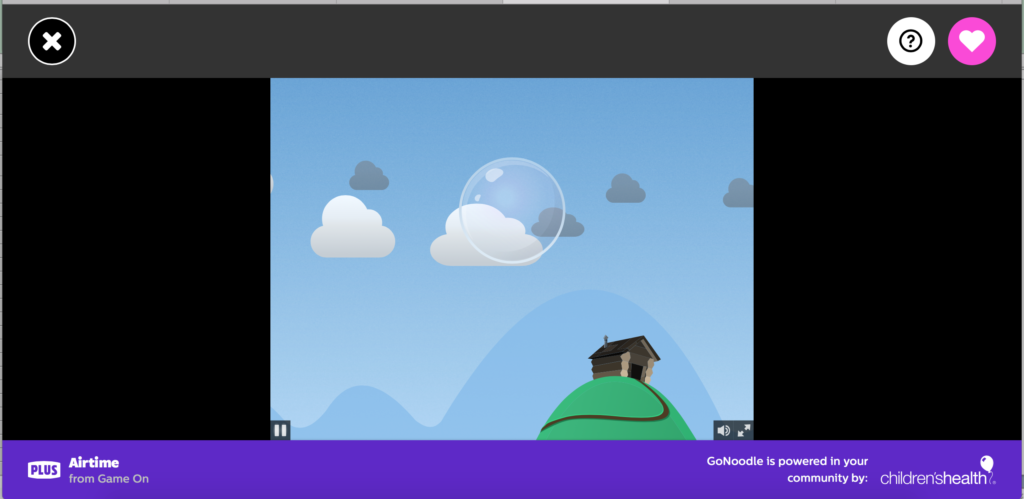
Once the bubble lands, you arrive in a new city. The class is always excited to see where we land. We have also learned some fun facts about different places in the United States.
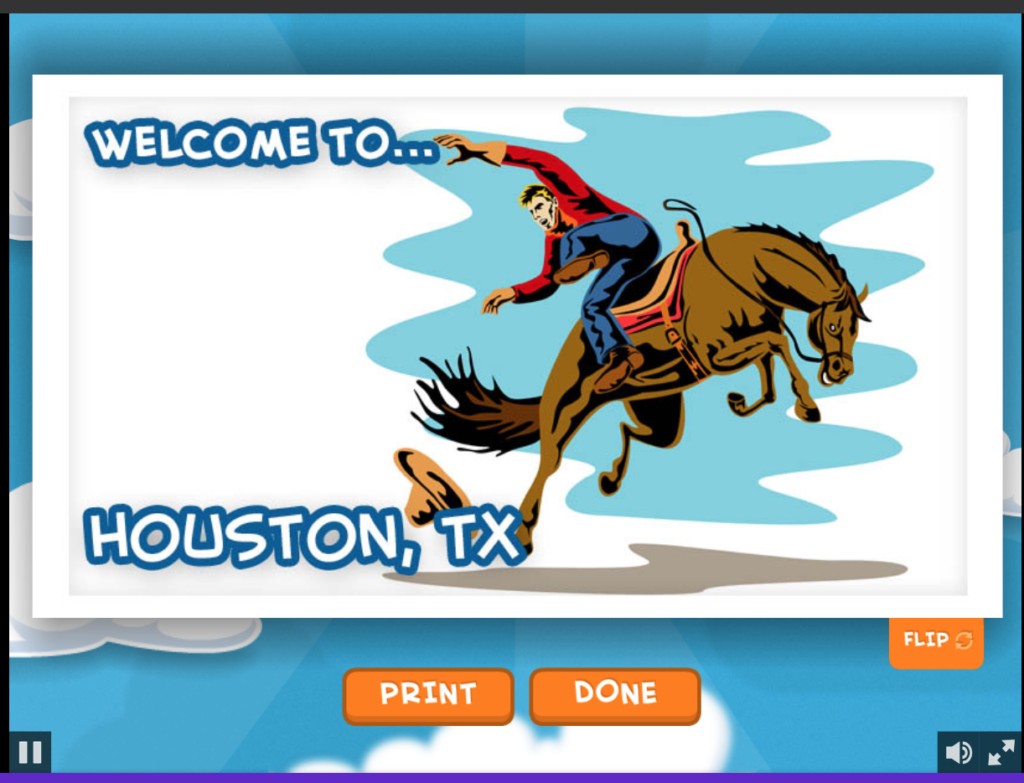
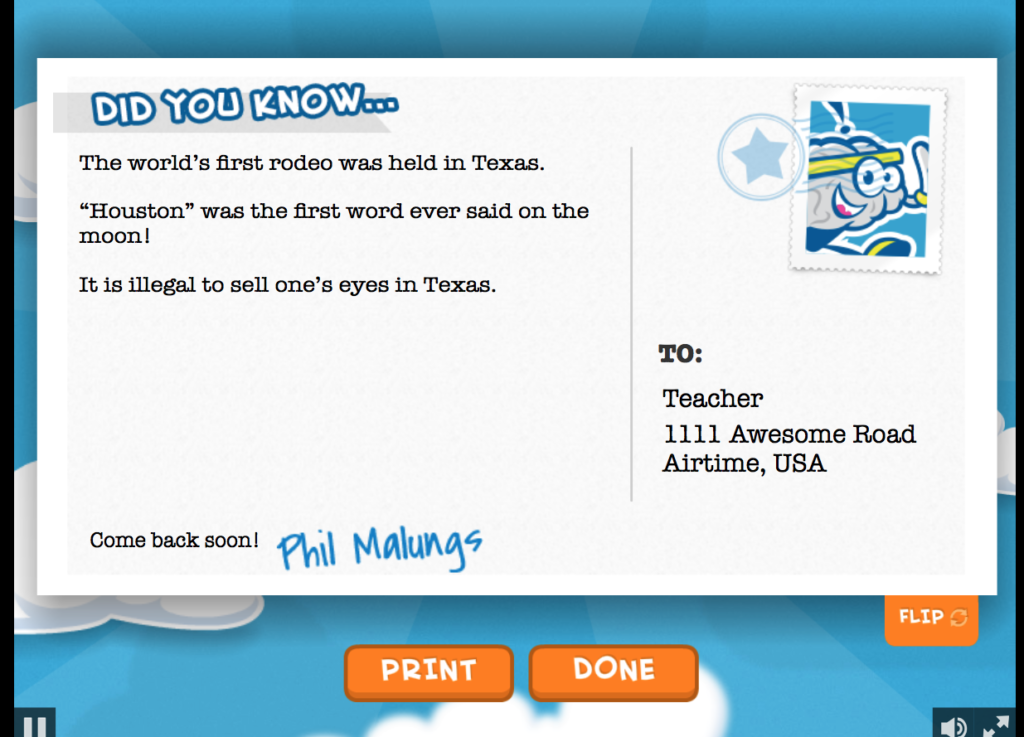
Another great stretching based movement activity is yoga! My favorite yoga activities is a story based yoga routine designed just for kids by Cosmic Kids Yoga. Sometimes we use these during the day, but my favorite use for these yoga videos is indoor recess! These are a wonderful way to move on those rainy or snowy days when going outside just is not an option.
Here’s an example video called Arnold the Ant:
4. Drama and Role Play
Can you say dramatic play center? This is the perfect way to incorporate new learned topics, vocabulary, and academic skills using movement. A dramatic play center is a great addition to the classroom and completely age appropriate for preschool, kindergarten and first grade. I’d even place my bet on being great for second graders too! Movement is a natural part of dramatic play and it opens the doors for many high order thinking skills like application and analysis. Maybe for those reluctant administrators who avoid the word ‘play’ we should rename it a Dramatic Learning Center!
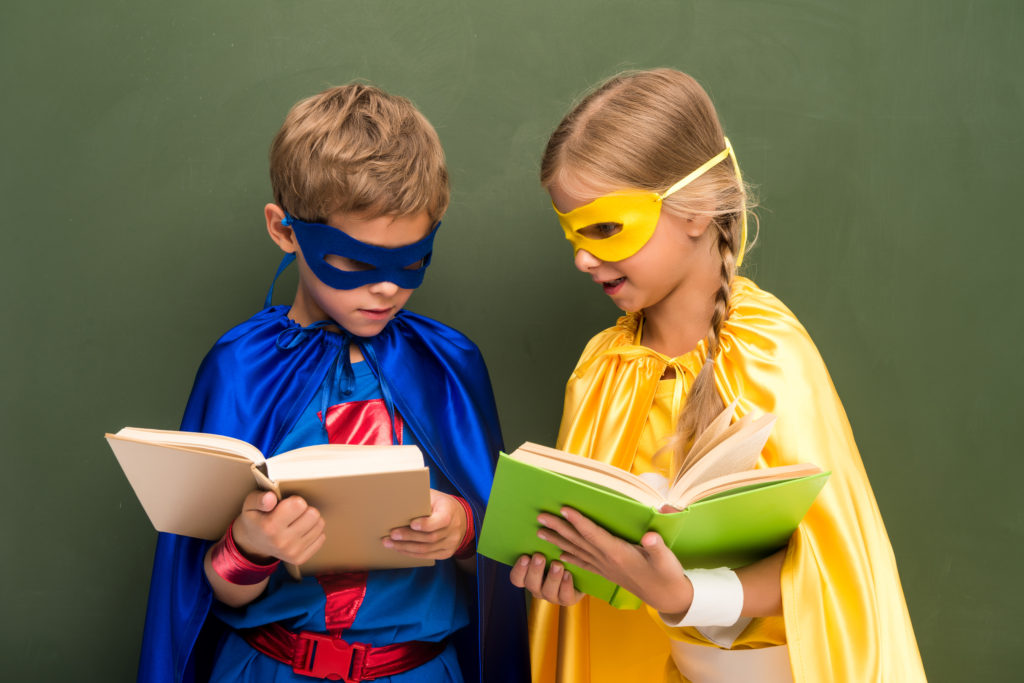
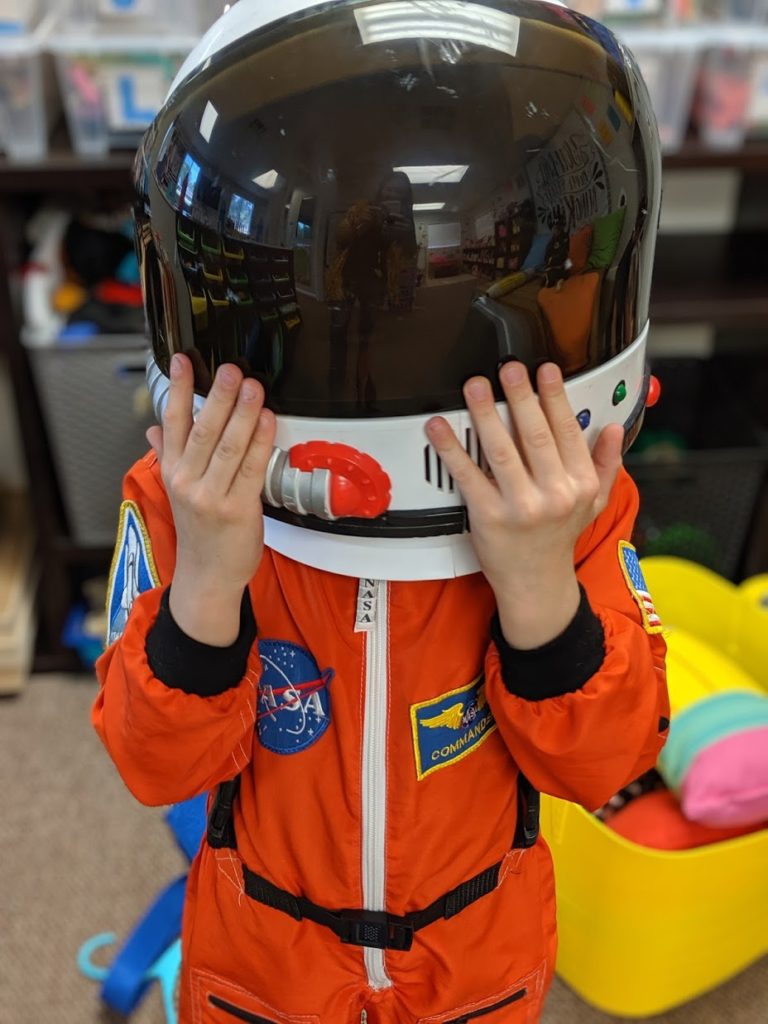
Here are some great Dramatic Learning Center resources your students will love! What I love most is the connection that they have to science and social studies. I love this bug themed Entomology Lab resource by Jennifer Heir of Early Learning Ideas. Who says primary students can’t learn big words!
Adding some role play and drama to our circle time is another great way to naturally add movement into the classroom. Whether it is acting out a re-telling of a story, playing charades to act out vocabulary words, or role playing classroom procedures drama and role play can be easily added across multiple curriculum areas.
5. Songs, Music and Chants
I don’t know about you, but when I hear music, something on my body starts moving. It might be a little toe tap, or might be a full blown dance party, but something is moving. Kids love music too! Sometimes I just love having music playing the background as we work. Other times I intentionally use music and songs to teach. Most kids come into kindergarten knowing the names of the letters. They might not be able to recognize the letters or write the letters, but they know their names. Why? Because of one song in particular – The Alphabet Song. Song by parents, grandparents and care takers all around the world, the Alphabet Song is a powerful teaching too.
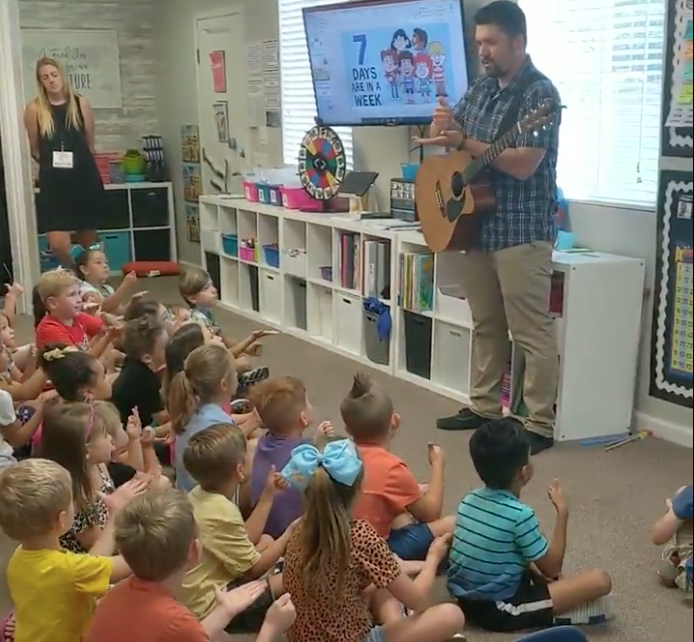
In the same way, we can use songs in the classroom. Don’t know a song about the sight word ‘see’ – no problem. Think about some common children’s songs and pick one that can help teach your skill. If I wanted my students to learn to spell the word ‘see’ I might use the tune of Row, Row, Row Your Boat.
{Cue background music}
S-E-E spells ‘see’,
S-E-E spells ‘see’,
I can spell, watch me,
S-E-E spells ‘see.’
See – nothing to it! An old familiar tune, a simple word, definition or concept and voila – a brand new song in the making.
Chanting is another fantastic way to include movement into the classroom. The natural rhythm of chanting is perfect for clapping, snapping, stomping, or patting. One of my favorite chanting activities is related to phonics. For example, teaching and review letter names and sounds, as well as digraphs, blends and vowel combinations can all be done through song. You might hear a very rhythmic chant of the alphabet along with some knee patting, clapping or snapping. It might sounds like this:
A – A (say letter name 2 x) /a/, /a/, /a/ (letter sound 3 times)
B – B /b/, /b/, b/
SH /sh/, /sh/, /sh/
CK /k/, /k/, /k/
Additionally, there’s also some wonderful learning songs available on You Tube. Some of my favorite You Tube channels for learning songs are Harry Kindergarten, Dr. Jean and Friends, and Jack Hartmann. If you are looking for some new songs to add to your classroom, make sure to visit these You Tube channels. They are all teacher tested and kid approved!
Movement Wrap-Up
Just in case you scrolled and found yourself here, here’s the Cliff Note’s version:
- Movement is an important part of the learning process
- You can easily add movement into the classroom
- Movement does not have to mean load and chaotic
- Recess is a wonderful movement break in and helps students focus better in the classroom
- Energizers are active movement that helps add energy to students
- Stretching and Breathing are great movement activities for focusing
- Drama and Role Play and wonderful ways to add movement while reviewing and allowing opportunities for higher order thinking skills like application and analysis
- The rhythm of songs and chants naturally lend themselves to movement and are a great way to learn
The Movement Challenge
I’m sure you now see many different ways that you already use movement in your classroom. I’d like to challenge you to step out of your comfort zone and pick one new movement activity to use this week. Try it every day for the entire week and see how it effects your students learning!
